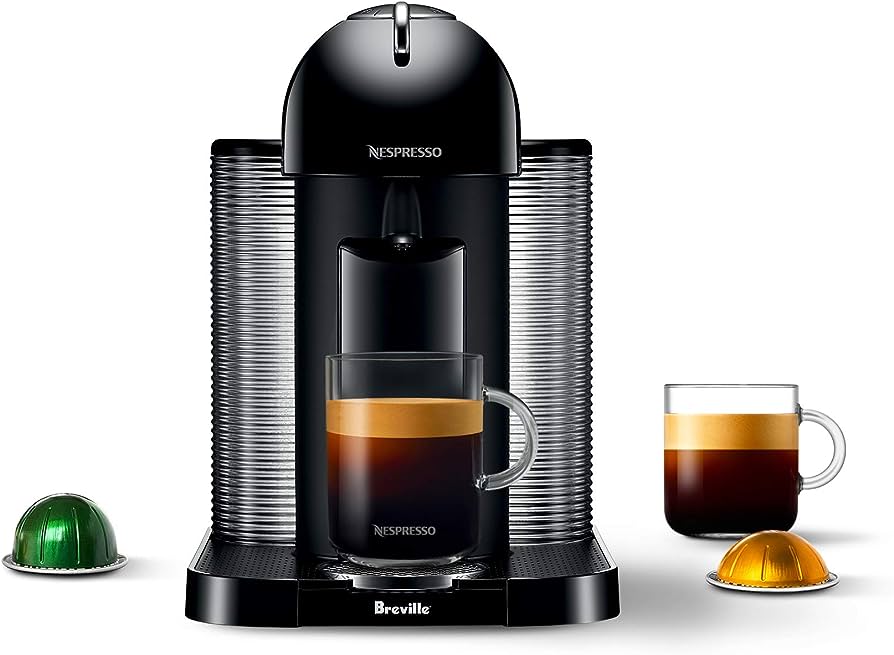Nespresso machines have become a staple in many households, providing quick and convenient caffeinated beverages. Occasionally, users may encounter a red light on their machine, which can be troubling for those not familiar with the meaning behind this signal.

In order to better understand and address the issue, it’s essential to gain insight on the different lights and signals that Nespresso machines use to communicate with users.
Understanding the meaning of the red light on a Nespresso machine can be the first step to solving common problems that may arise. Various issues, such as the need for descaling or resolving machine-related errors, can trigger this signal.
YOU MIGHT ALSO LIKE TO READ:
NESPRESSO ADVENT CALENDAR 2023
By becoming familiar with these signals and their meanings, users can learn how to troubleshoot and maintain their Nespresso machines, ensuring a smooth and enjoyable coffee experience.
FTC DISCLOSURE: Some of the links in this post are affiliate links. If you click on them and make a purchase, I will receive a small finder’s fee on the sale. This does not increase your price in any way shape or form. Using these links help support the continuation of this website. All opinions are my own. Thank you in advance.
Key Takeaways
- The red light on a Nespresso machine indicates possible issues that need attention, such as descaling or error resolution
- Familiarizing oneself with Nespresso lights and signals can aid in troubleshooting and addressing common machine problems
- Proper maintenance, including descaling procedures, can help extend the life and performance of your Nespresso machine
Understanding the Nespresso Red Light Issue
Nespresso machines are known for their convenience and consistent quality of coffee. However, like any machine, they might encounter some issues over time. One common problem users have reported is the red light issue, where the red light on the Nespresso machine blinks or remains steady, indicating a potential error.
Addressing the blinking red light error is essential for troubleshooting and maintaining the proper functioning of your Nespresso machine. Depending on how the red light is displayed – whether it’s blinking two times, blinking three times, or staying steady – the issue could vary.
When the Nespresso red light blinks two times, it is generally an indication that the machine has insufficient water, and the water tank needs to be refilled. In other cases, it could be caused by the machine not being properly primed.
To resolve this, turn off the machine, wait a few minutes, and restart it while ensuring there is enough water in the reservoir.
If the red light is blinking three times, it might signal that the coffee capsule is blocked, and the brewing unit needs cleaning. To fix this issue, remove the capsule and thoroughly clean the brewing unit, ensuring there are no debris or obstructions.
A steady red light on Nespresso machines usually points to a more significant issue that may require further troubleshooting or professional assistance. It could mean that there is an internal fault with the machine’s components or software. In this case, it is best to consult the Nespresso user manual or contact customer service for additional guidance.
Thankfully, the Nespresso team is very helpful and answers all of your questions over the phone.
The Meaning of Nespresso Lights and Signals
Nespresso machines are designed to provide users with clear and easy-to-understand visual feedback through their lighting systems. The lights and signals on Nespresso machines come in various colors such as green, orange, and yellow. Each color signals a different function or status of the device.
Green light illumination typically signifies that the machine is powered on and ready to use. In some cases, a green blinking light may indicate that the device is in a special function mode, such as descaling or cleaning. To exit or modify this mode, users can refer to their machine’s menu or manual.
An orange light on a Nespresso machine indicates that the device is in standby mode or requires attention. For example, a blinking orange light together with blinking green lights may signify that the water tank needs to be refilled. Other issues associated with a solid or blinking orange light might include an empty capsule container or a required maintenance procedure.
Yellow lights represent certain special functions. Depending on the model, a blinking yellow light may signal either a low water level or that the machine is warming up to reach the optimal brewing temperature. Understanding the blinking pattern is essential for diagnosing the specific issue, as it can vary between different models.
Troubleshooting Common Nespresso Issues
Nespresso machines are well-known for their ability to brew delicious espresso and coffee beverages. However, like any appliance, they can occasionally encounter issues. To keep your Nespresso machine running smoothly, it is essential to troubleshoot common problems and apply the appropriate solutions.
One indicator of an issue with your Nespresso machine is a red light. This typically implies that the water tank is empty or not placed correctly. To resolve this, check the water tank’s position, ensuring that it’s properly seated. If the issue persists, fill the tank to the recommended level and try brewing your espresso again.
If you notice that your Nespresso machine is not brewing coffee properly, it may be due to a problem with the capsule compartment. When the capsule container is full, the machine will not function until it’s emptied. To fix this, remove and discard used capsules from the capsule container.
Sometimes, a Nespresso machine might experience issues with the brewing process itself. Whether it’s your Vertuo, Vertuo Next, or Nespresso Vertuo Plus by Breville, the solution might be as straightforward as resetting the device. To reset your Nespresso machine, unplug it and wait for 10 seconds before plugging it back in. This will clear any temporary issues and allow the machine to function normally.
Occasionally, the problem with your Nespresso machine might be due to a lack of maintenance. To keep the machine in optimal condition, it’s essential to clean it regularly and descale it as needed. Descaling and cleaning your machine will not only ensure that it continues to brew great coffee but also prolong its lifespan.
Addressing Nespresso Descale Indicators and Procedures
Descaling your Nespresso machine is a crucial maintenance task that ensures your coffee maker operates efficiently. Over time, scale deposits from minerals in the water build up inside the machine. Left unattended, this buildup can affect the taste of your coffee and may even cause damage to your machine.
When you see a red light on your Nespresso machine, it’s likely an indicator that it’s time to descale it. The descaling process removes scale deposits and helps maintain the optimal performance of your appliance. To tackle this task, you can use the approved Nespresso descaling kit or opt for alternative solutions like vinegar.
NESPRESSO’s descaling procedure involves the following steps:
- Empty the water tank and drip tray.
- Mix the descaling solution with the appropriate amount of water as per the instructions provided in the Nespresso descaling kit or opt for a vinegar and water mix as an alternative solution.
- Fill the water tank with the prepared solution.
- Place a container under the coffee outlet.
- Turn on the machine and begin the descaling process according to your machine’s specific instructions.
It is essential to refer to your Nespresso machine’s user manual for detailed information on the descaling process, as each model may have slightly different operational procedures.
To ensure the longevity of your Nespresso machine, it’s recommended to descale your appliance regularly. The descaling frequency may vary based on individual usage and the hardness of the water being utilized. For instance, if you have soft water, you may need to descale every three months. On the other hand, if you have hard water, it might be necessary to descale your machine more frequently.
By adhering to the recommended descaling intervals and using the appropriate descaling solution, you can keep your Nespresso machine in proper working order, ensuring consistent quality and taste in your coffee-making endeavors.
Insight on Maintaining Your Nespresso Machine
Proper cleaning and regular maintenance of your Nespresso machine can significantly improve your coffee brewing experience. It is essential to address coffee residue, blockages, and mineral buildup since these factors can cause issues with the machine’s performance.
Cleaning your Nespresso machine involves a series of simple steps. First, remove the brewing unit from the machine. This part of the machine can accumulate coffee residue over time, which may affect the brewing process. Next, wash the brewing unit with warm, soapy water. Make sure to rinse it thoroughly before reinstalling it into the machine.
Regular maintenance of your Nespresso machine also includes the removal of mineral buildup. Minerals, such as calcium and magnesium, can accumulate on the internal components of the machine, leading to blockages and affecting the quality of your coffee. To avoid this issue, it is recommended to descale your Nespresso machine periodically. Descaling kits are available in the market, and a step-by-step guide is often provided with these kits to help users through the process.
In addition to cleaning the brewing unit and descaling, regular maintenance should also entail the inspection and cleaning of the machine’s other components, including:
- Water tank: Empty and clean the tank with warm, soapy water at least once a week to prevent any bacteria or algae formation.
- Drip tray: Clean the drip tray and the capsule container as needed to avoid accumulation of spilled coffee and used capsules.
- Steam wand (if applicable): Rinse the steam wand after each use and ensure no milk residue is left on the wand.
Performing these maintenance tasks routinely will help to prolong the life of your Nespresso machine, ensure consistent coffee quality, and provide an enjoyable brewing experience.
Managing Nespresso Machine Related Errors
Nespresso machines may display a red light as an indicator of various issues or errors. The errors can be caused by different factors, such as obstruction, overheating, or an empty water tank. To maintain a well-functioning appliance, it’s essential to address these errors promptly and efficiently.
A common error is when the head of the Nespresso machine is in an unknown position. This usually occurs when there’s an obstacle blocking the appliance from operating correctly. It is essential to remove any obstructions and ensuring no debris is present in the machine.
Another error is overheating of the Nespresso machine, which can happen when it is used continuously or when there is a problem with the internal cooling system. To resolve this issue, give the machine time to cool down before attempting to use it again. Additionally, it’s essential to check for any possible external factors that may cause the machine to overheat.
Insufficient water and an empty water tank can also trigger a red light, signaling that more water is required to continue the brewing process. Refilling the water tank should resolve this issue. In some cases, the machine’s head may be insecurely locked, which can also cause a red light to appear. Ensure that the head is securely closed to prevent any further problems.
Missing capsules or incorrect capsule placement can lead to a red light showing up on the Nespresso machine. Double-checking that the coffee capsule is correctly placed will usually solve this situation. Moreover, sometimes the machine may enter energy-saving mode while heating up, making the red light appear. Simply allowing the appliance to finish heating up before using it should clear up this error.
If all the previously mentioned issues have been addressed and the red light remains, try resetting the Nespresso machine to its factory settings. This step may help resolve any unseen internal errors. However, if the red light persists even after taking these actions, it’s recommended to reach out to the Nespresso customer support for further assistance.
Getting Help from Nespresso Support
Nespresso Support provides a wide range of assistance options for customers experiencing a red light issue with their machine. Customers can first refer to the Frequently Asked Questions (FAQ) section on the Nespresso website. This page offers extensive information on common machine issues, including explanations and troubleshooting tips.
If the FAQ does not resolve the issue, customers can contact Nespresso Support through their hotline or live chat service. Both channels provide immediate assistance, facilitated by trained customer care representatives. They can diagnose possible causes and solutions for the red light signal and provide step-by-step guidance on resolving the issue.
Additionally, customers can send an email to the support team describing their problem. Nespresso Support will usually respond with a detailed explanation and instructions within a few business days. It is always helpful to include your machine’s model and serial number, as well as a concise description of the problem encountered.
For customers whose machines are still under warranty, the red light issue can be addressed more comprehensively. Nespresso machines generally come with a warranty period, which may cover repair or replacement of the machine. Customers should contact a Nespresso representative to verify their warranty coverage and follow the provided guidelines to claim any necessary services.
Ultimately, it is essential to stay informed about Nespresso’s customer care policies and options. This ensures that customers receive comprehensive support when faced with a red light issue or any other Nespresso machine challenges.













